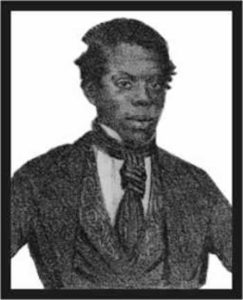
Master Juba
*The birth of Master Juba is celebrated on this date in 1825. He was a Black stage entertainer specializing in dance and one of America's first publicly recognized black performers.
Born William Henry Lane in Providence, RI, he began his career in the saloons and dance halls of the Five Points neighborhood of Manhattan in or near 1840, moving on to minstrel shows throughout the decade. Dance historians Marshall and Jean Stearns assert that Juba soon went beyond the routines of the day, standing out from his peers by combining Irish and African American folk steps into very fast and entirely new dances.
In a related precursor to Vaudeville, Master Juba frequently challenged other dancers to contests and defeated the best white dancers, including the period favorite, John Diamond. An advertisement for the event in a city newspaper read: GREAT PUBLIC CONTEST Between the two most renowned Dancers in the world, the Original JOHN DIAMOND, and the Colored Boy JUBA, for a Wager of $300 . . . at the BOWERY AMPHITHEATER, which building has been expressly hired from the Proprietor. The time to decide has come, and the friends of Juba have challenged the world to produce his superior in this Art. His friend, Diamond, accepted that challenge, and the following Monday Evening, they met and danced Three Jigs, Two Reels, and the Camp town Hornpipe.
At the height of his career, Juba's act featured a sequence in which he imitated many of the famous dancers of the day and closed by "imitating himself." He also appeared with the Ethiopian Serenaders. The last known record of Juba places him at the City Tavern in Dublin, Ireland, in September 1851: "Boz's Juba appears here nightly and is well received." Dance historian Marian Hannah Winter said that Juba died in London in 1852.
The cause of Juba's death is a matter of speculation. Assuming the record suggests that Juba worked day and night for 11 years from 1839 to 1850. Especially in his early days, Juba worked for food and would have been served the typical tavern meal of the time: fried eels and ale. Such a demanding schedule, poor food, and little sleep likely doomed Juba to his early death. February 3, 1854, is the date accepted by The Oxford Dictionary of National Biography, whose death on that day was registered in Liverpool. Their entry suggests the name "Bois Juba" is a probable clerical error for "Boz's Juba," the sobriquet by which Juba was best known in England.
It points out that other biographical details in the death certificate - that the deceased was an American-born musician, aged 30 - correspond to Juba's. "Bois Juba" died in the fever ward of the Brownlow Hill infirmary in Liverpool and was buried on February 6, 1854, in the free part of the cemetery of the nearby church of St Martin's. This church, bombed during World War II, was later demolished. Although burials were re-interred at St Mary's Church, Walton-on-the-Hill, the exact location of Juba's grave is therefore unknown. Part of the legacy of Master Juba can be found mainly in Stepping performances globally.